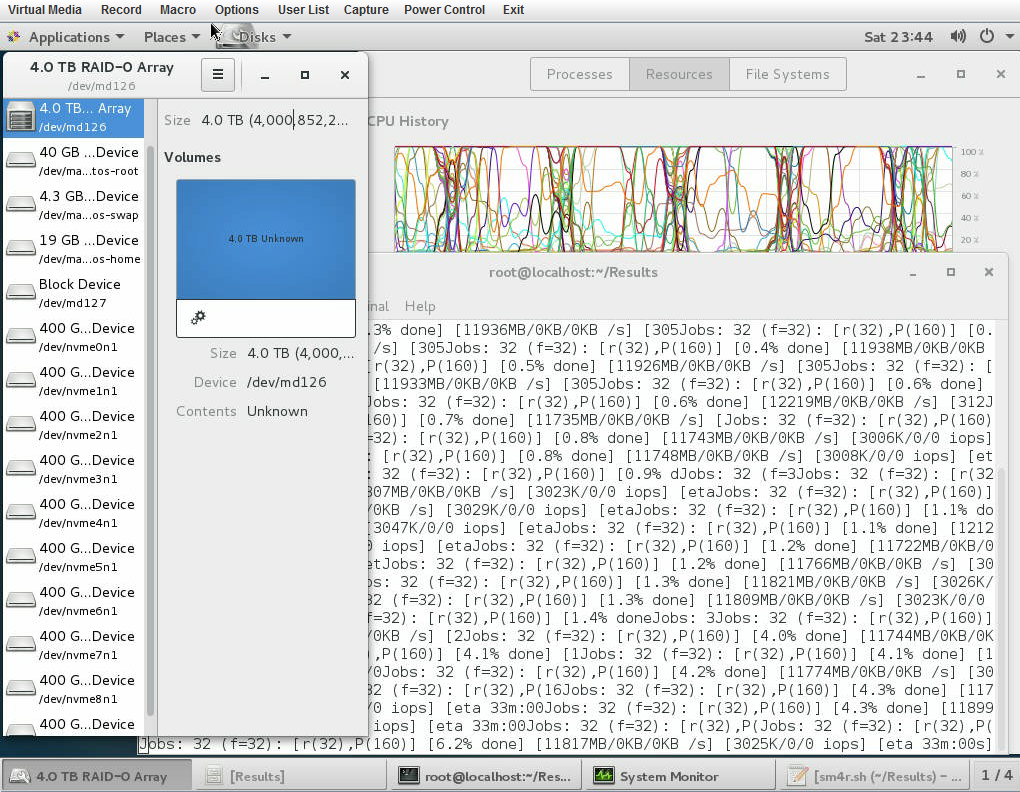Intel Xeon E5-2600 v4 Broadwell-EP Review
Why you can trust Tom's Hardware
Supermicro And NVMe RAID Testing: 3 Million IOPS And 21 GB/s
Supermicro SuperServer SYS-1028U-TN10RT+

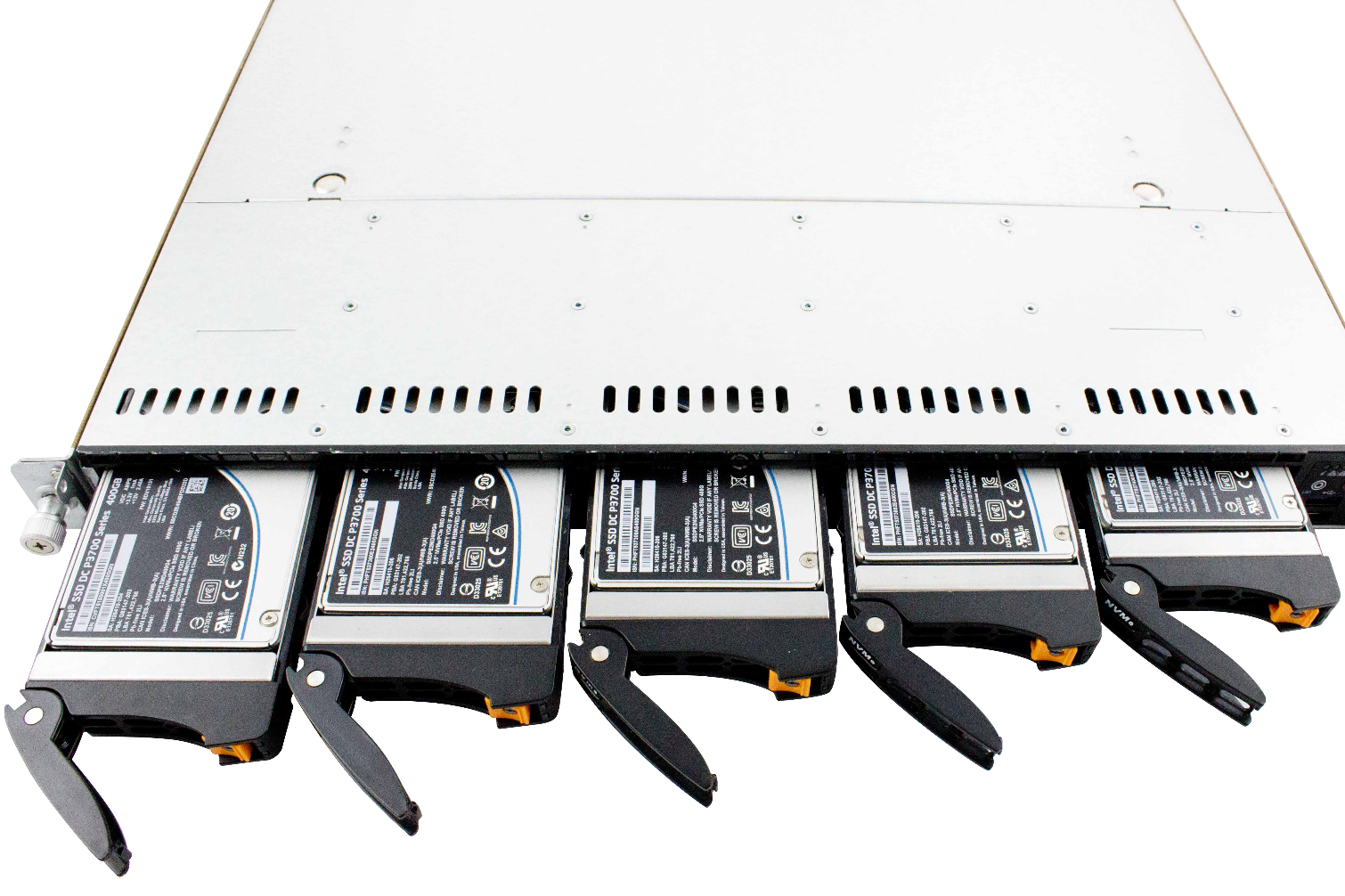
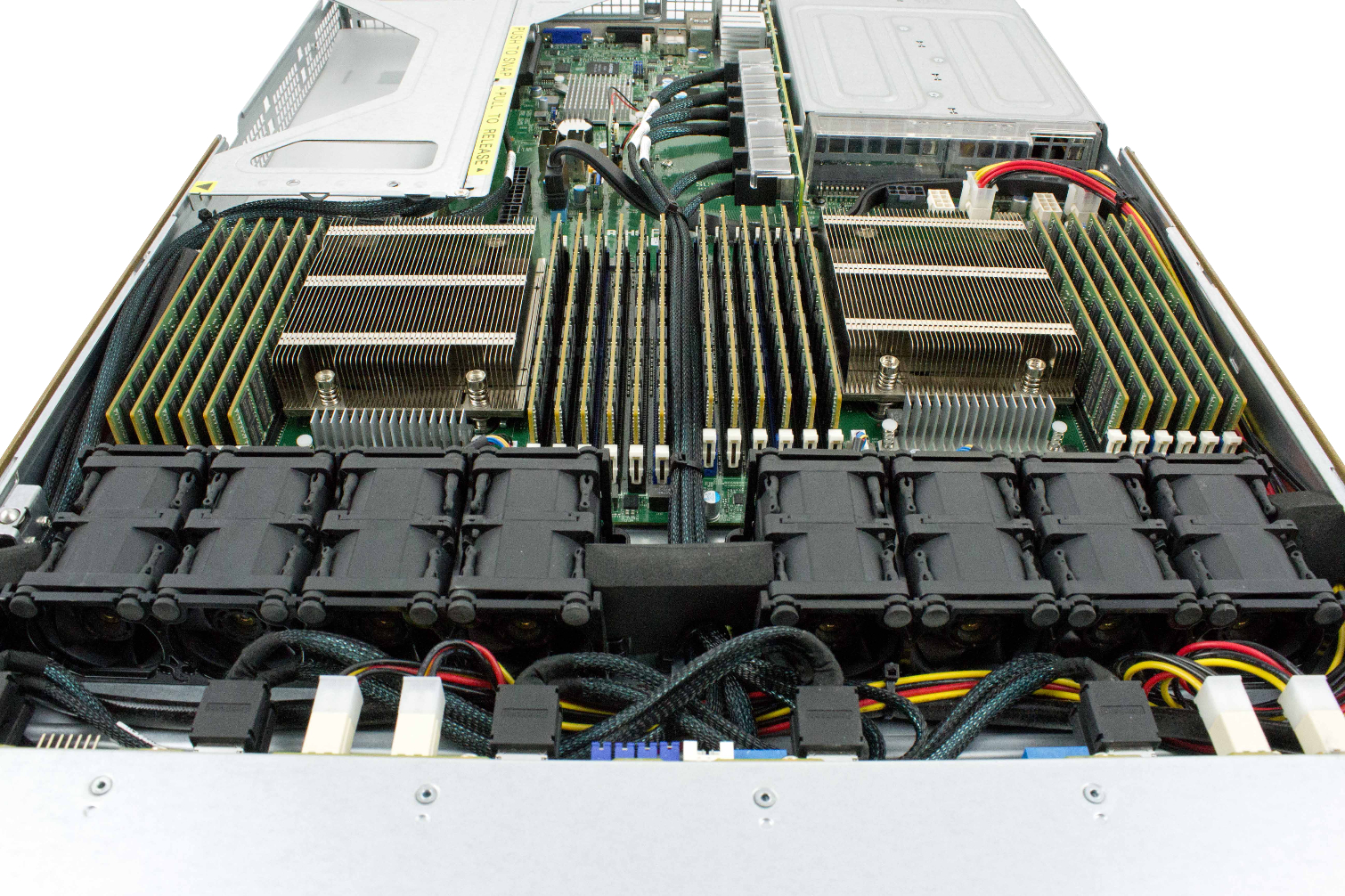


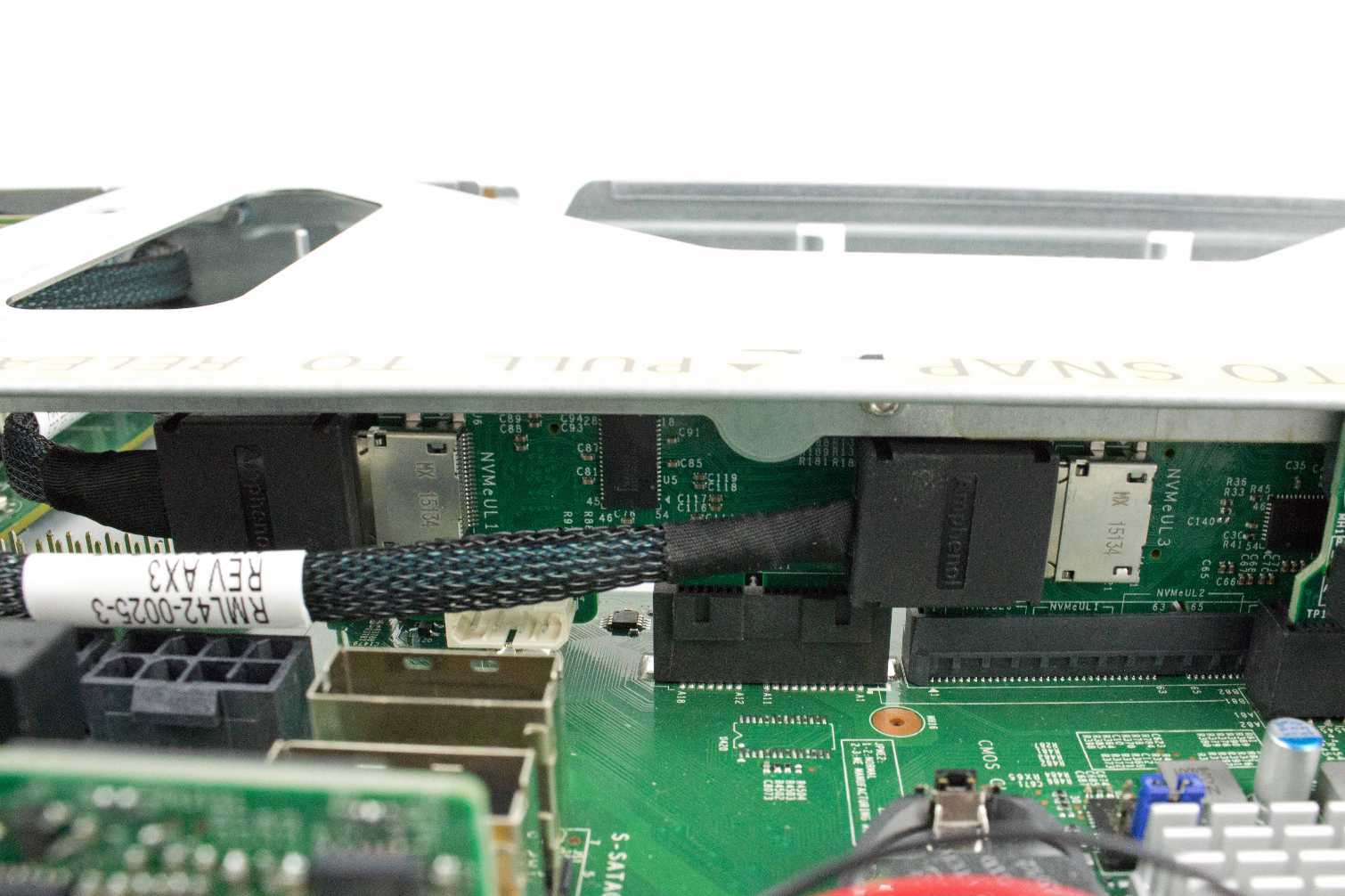
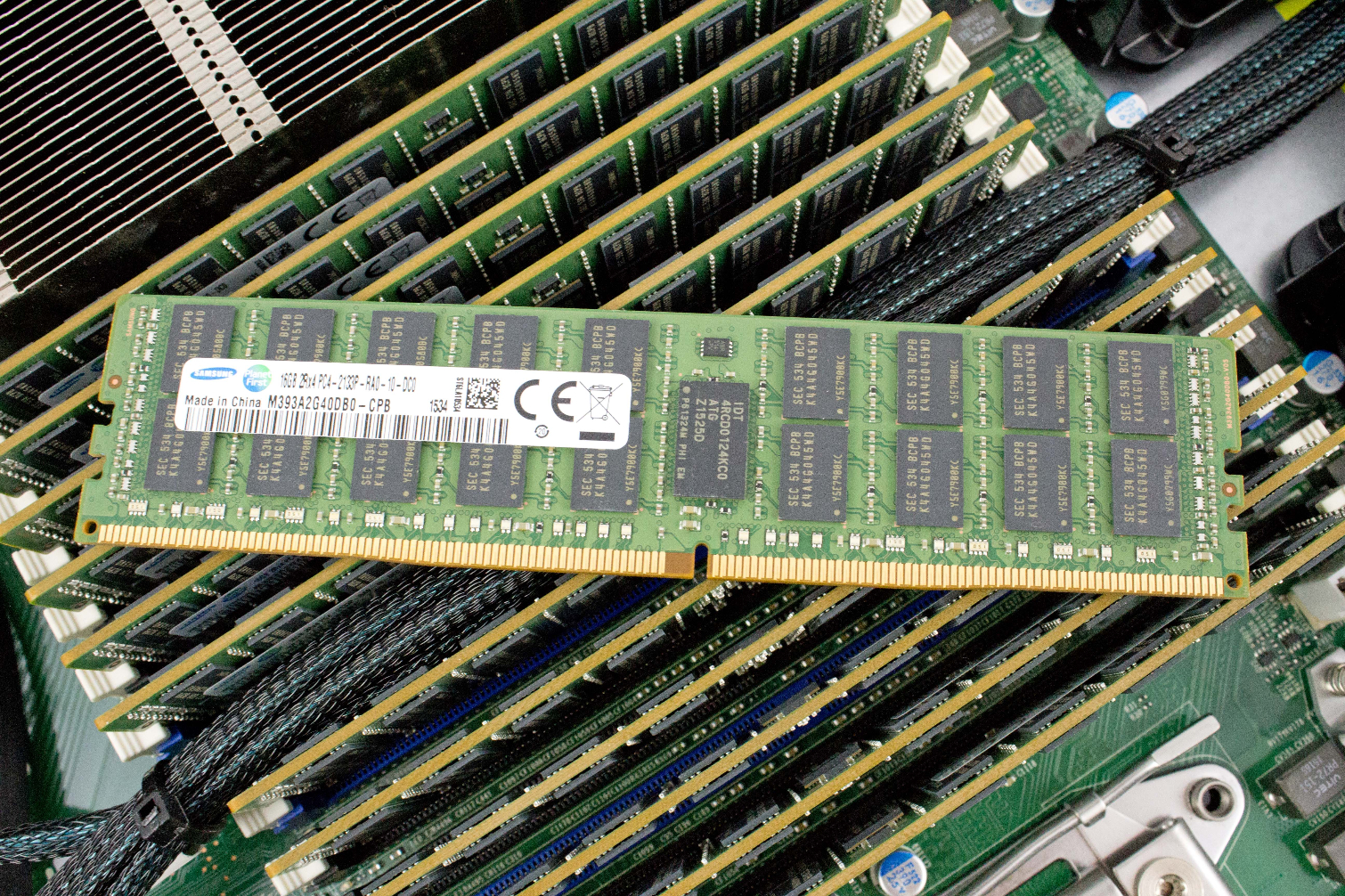
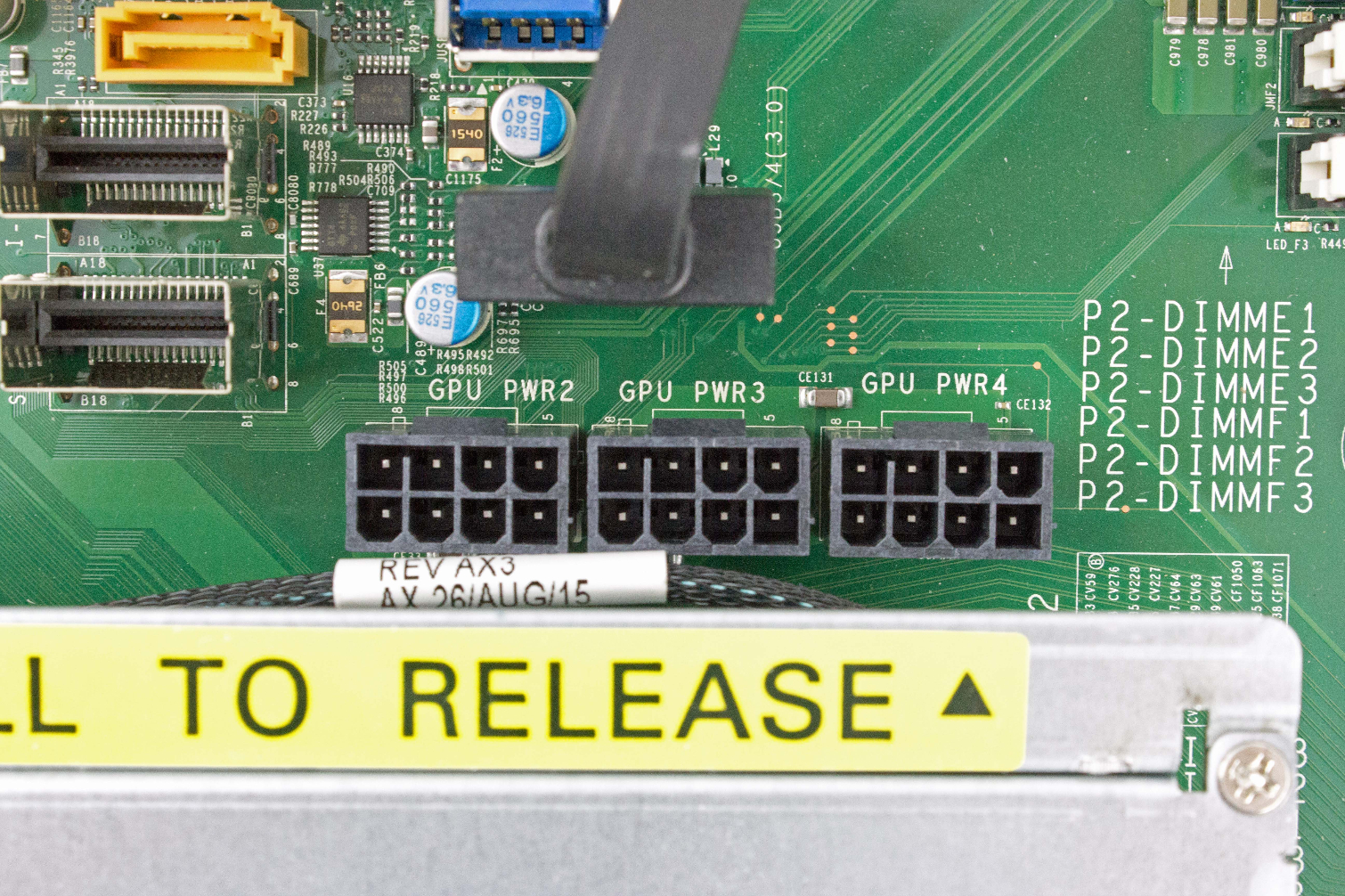
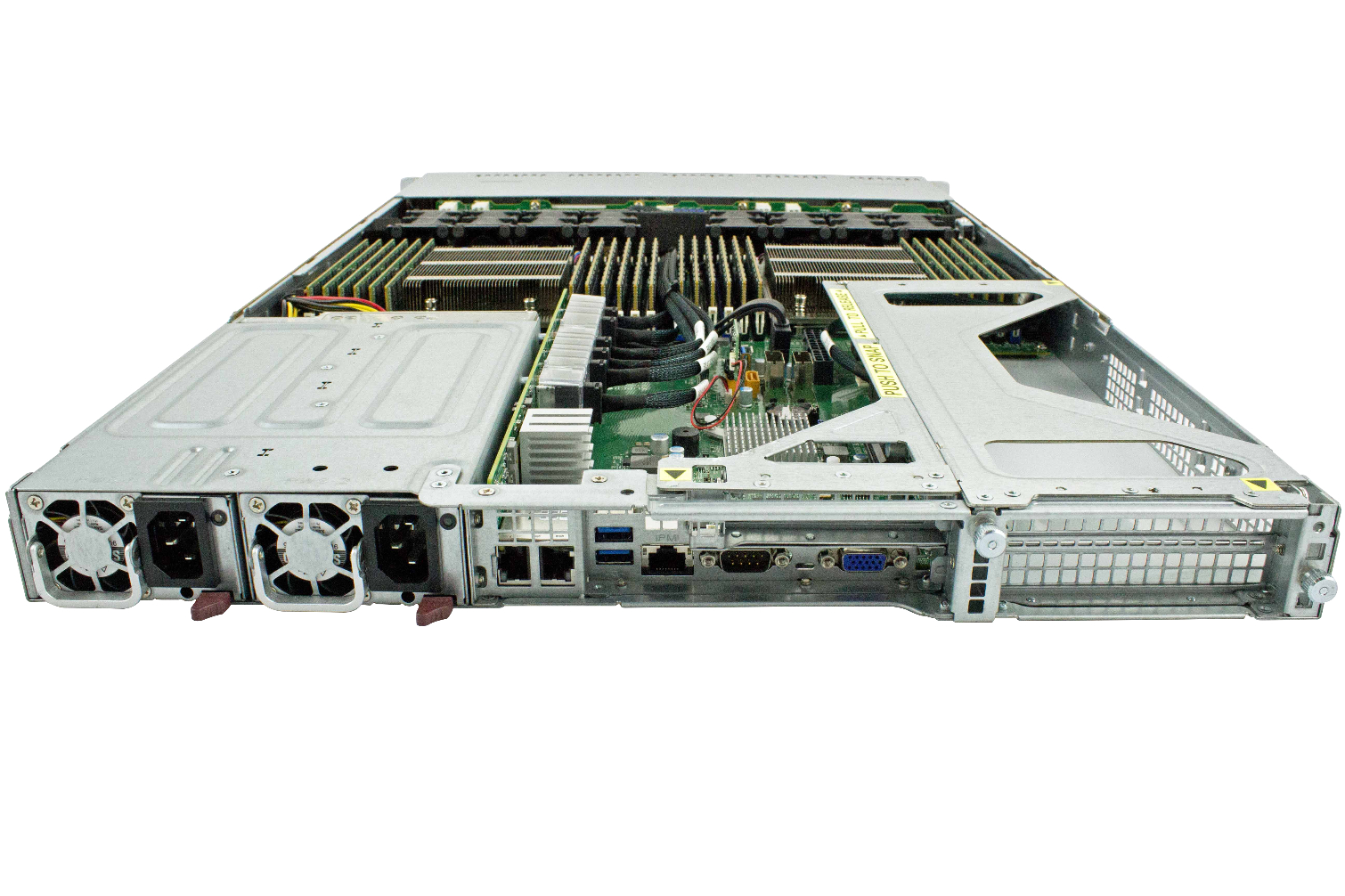
We already had the slender 1U Supermicro SuperServer SYS-1028U-TN10RT+ in our enterprise storage lab, so after a quick BIOS update we slapped in the Xeon E5-2679 v4 CPUs and went to work.
Don't let its diminutive stature fool you; the SuperServer is a little powerhouse. It features 10 hot-swap NVMe bays that we populated with ten 400GB 2.5" Intel DC P3700 SSDs. Normally, 16 counter-rotating fans provide copious airflow over 24 Samsung 16GB DDR4-2133 ECC DIMMs, but we removed 16 of them to level the playing field. Even with 384GB of DDR4 at our disposal, we are not populating the server to capacity; it supports an amazing 1.5TB of DDR4 ECC LRDIMMs.
The NVMe SSDs mate to the PCIe backplane, which Supermicro routes to a pair of switchless expansion cards in the rear. These cards provide direct PCIe 3.0 x4 connections to the CPU, enabling incredible performance. The back of the chassis features two 10GbE ports and one management port, along with dual Titanium-rated 1000W redundant power supplies.
Need a slice of parallel processing in the storage sandwich? You also get three auxiliary eight-pin power connectors, allowing the server to accommodate either two full-height full-length graphics cards, or one double-width board and a low-profile offering.
We configured the 10 Intel NVMe SSDs into a RAID 0 volume (mdadm) in CentOS 7, demonstrating how the E5 2697 v4's 36 threads come into play under heavy I/O operations. The colored spaghetti strings in the picture above indicate the load of each core during a 32-thread 4KB random read workload.
Incredibly, we're pushing just over 3 million IOPS during this capture with an aggregate CPU utilization of 90.9 percent. To put that into perspective, you're seeing nearly 12 GB/s of random throughput. Now you see why very fast multi-core CPUs are so important to extracting maximum performance from NVMe-based SSDs in servers.
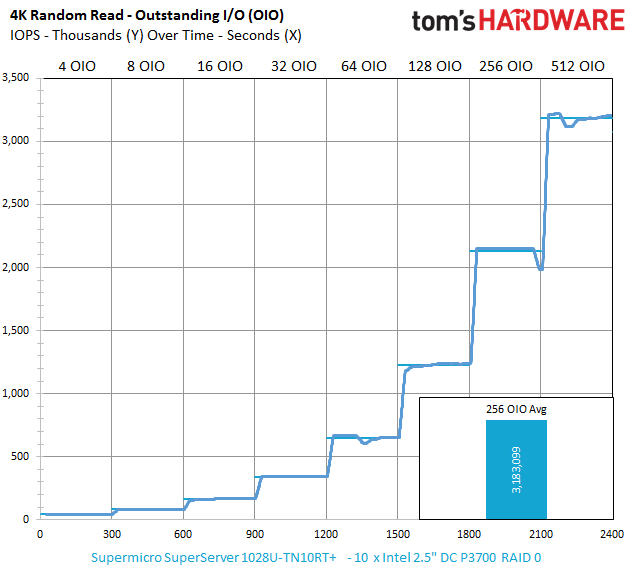

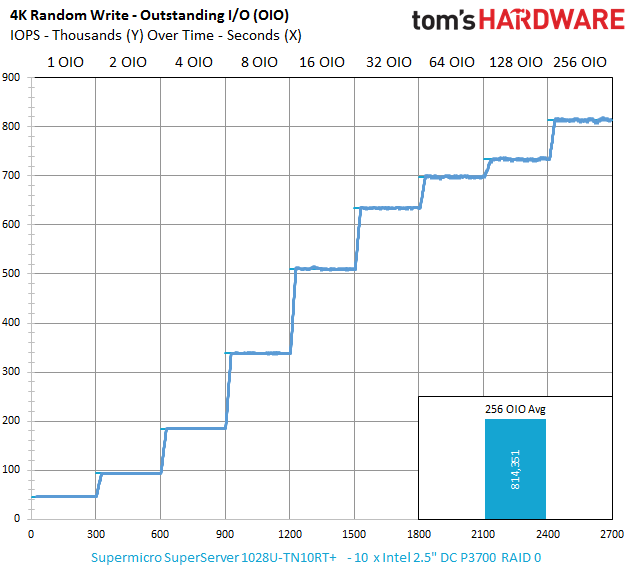
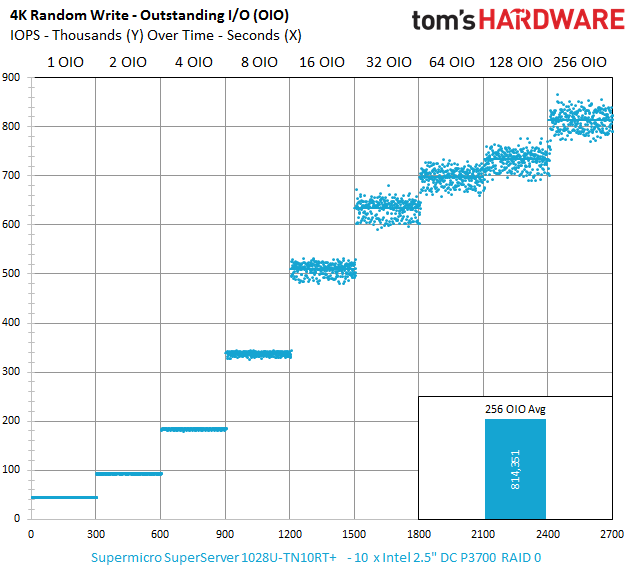
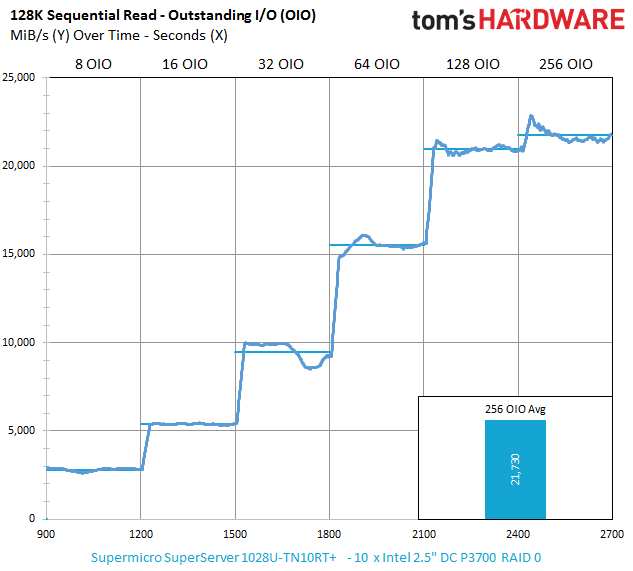
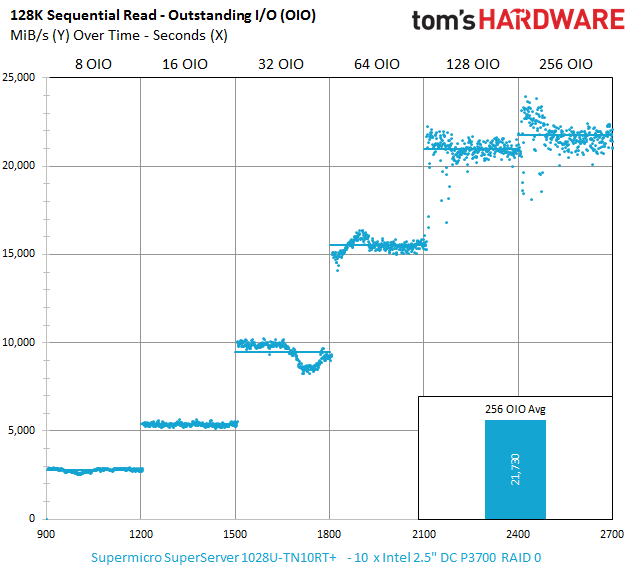
These results are hard to beat; we recently took 64 of the fastest PCIe SSDs out for a spin in 64 PCIe SSDs, 120TB Of Flash And One Stop Systems: The FSA 200 Review. The FAS 200 topped out with 3,055,735 IOPS in a system that monopolizes 5U of rack space. Meanwhile, the 1U Supermicro server musters even more random read performance thanks to its switchless design. We reach 814,351 IOPS during the 4KB random write workload, which is excellent scaling considering that Intel specs each drive at 75,000 random write IOPS.
Get Tom's Hardware's best news and in-depth reviews, straight to your inbox.
The SuperServer continues to impress with a beastly 21 GB/s of sequential read throughput (yes, gigabytes), easily surpassing the 13 GB/s we achieved with the FAS 200.
It is hard not to like this much power packed into such a small footprint; it's the personification of both performance and storage density. Now that we have seen what Intel's current-gen SSDs can do, let's take a look at the next generation.
Current page: Supermicro And NVMe RAID Testing: 3 Million IOPS And 21 GB/s
Prev Page Intel Test Platforms And How We Test Next Page Intel's 3D NAND SSD Debut: DC P3520/P3320 And DC3700/3600
Paul Alcorn is the Editor-in-Chief for Tom's Hardware US. He also writes news and reviews on CPUs, storage, and enterprise hardware.
-
utroz Hmm well we know that Broadwell-E chips must be coming very very soon if Intel let this info out.Reply -
bit_user Wasn't there supposed to be a 4-core 5.0 GHz SKU? Single-thread performance still matters, in many cases.Reply
-
turkey3_scratch Reply17746082 said:Wasn't there supposed to be a 4-core 5.0 GHz SKU? Single-thread performance still matters, in many cases.
In most server applications it doesn't matter as much as multithreaded performance. If you need single-core strength, getting a consumer chip is actually better, but you probably aren't running a server if single-threaded is your focus. -
PaulyAlcorn ReplyWasn't there supposed to be a 4-core 5.0 GHz SKU? Single-thread performance still matters, in many cases.
I read the rumors on that as well, but nothing official has surfaced as of yet to my knowledge. -
bit_user Reply
Try telling that to high-frequency traders. I'm sure they want the reliability features of Xeons (ECC, for example), but the highest clock speed available.17746141 said:17746082 said:Wasn't there supposed to be a 4-core 5.0 GHz SKU? Single-thread performance still matters, in many cases.
In most server applications it doesn't matter as much as multithreaded performance. If you need single-core strength, getting a consumer chip is actually better, but you probably aren't running a server if single-threaded is your focus.
And the fact that Intel even released low-core high-clock SKUs is an acknowledgement of this continuing need. Clock just not as high as I'd read. With the other specs basically matching the Haswell version, the only difference is ~5% IPC improvement. Seems pretty poor improvement, for a die-shrink.
-
firefoxx04 Would nice to have a quad core xeon that turbos at 4.4ghz just like the 4790k. I had to go with a 4690k when building an autocad system because it only uses one core and needs that core to be fast... this means i have to sacrifice ecc support.Reply -
bit_user Reply
On wccftech (not the most reliable source, I know), they claimed:17746160 said:Wasn't there supposed to be a 4-core 5.0 GHz SKU? Single-thread performance still matters, in many cases.
I read the rumors on that as well, but nothing official has surfaced as of yet to my knowledge.
Model: Intel Xeon E5-2602 V4
Cores/threads: 4/8
Base clock: 5.1 GHz
Turbo clock: TBD
L3 Cache: 5 MB
TDP: 165W
Given what we know about 2.5 MB/core of L3 Cache, the 5 MB figure sounds suspicious. It's conceivable they could disable some to hit the target TDP, I guess.
-
firefoxx04 We cant get skylake to consistently hit 5ghz... why would a xeon chip suddenly hit 5ghz?Reply -
JamesSneed Reply17746312 said:We cant get skylake to consistently hit 5ghz... why would a xeon chip suddenly hit 5ghz?
I'm not saying the 5Ghz rumor is true but Intel has always known which chips can hit higher clocks during certification if the chip is a top end or low end chip cores disabled etc. I'm sure they could cherry pick a few to sell for $$$ if they wanted. Now are they I have no real idea. -
bit_user Reply
Well, I was surprised, too.17746312 said:We cant get skylake to consistently hit 5ghz... why would a xeon chip suddenly hit 5ghz?
There are obviously things you can do in chip design that allow one to reach different timing targets. And I was hoping they might've refined their 14 nm process, since the time the first Broadwells launched. So, I thought, with more TDP headroom afforded by this socket (roughly double what Skylake has to work with), maybe they could do it.
I thought maybe Intel was addressing some pent-up demand for high clockspeed applications. That said, it seemed particularly odd in Broadwell, given that it generally seems oriented towards lower clockspeed / lower power applications.
But maybe it was a typo, or even a blatant lie, in order to track down leakers.
